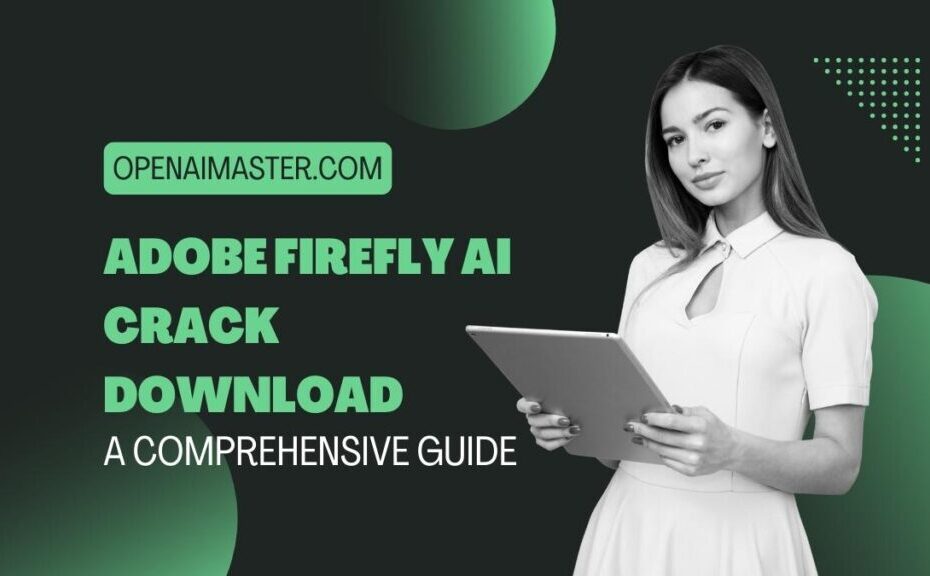Introduction
As an AI expert and lead data scientist at an AI development firm, I‘ve been eagerly following Adobe‘s new generative AI system, Firefly. Firefly promises to revolutionize creative workflows by amplifying human imagination through AI. However, as with any transformative technology, questions around responsible and ethical access are paramount.
In this detailed guide, I‘ll provide my professional perspectives on Firefly‘s capabilities, why resisting cracks in favor of legal access is crucial, and how practitioners can optimally yet responsibly harness creative AI‘s potential. Buckle up for an illuminating tour across creativity‘s cutting edge!
Understanding Firefly: A Generative Toolkit for Creative Augmentation
So what exactly is Adobe Firefly AI, and how does it work? In technical terms, it‘s a cloud-based generative AI framework specialized in computer vision and natural language processing to assist human creativity. But in more understandable language, think of it like a versatile creative assistant – you describe what you‘d like to make, and it tries to generate custom images, videos, graphics and more tailored to your prompt.
I see Firefly as the culmination of Adobe‘s efforts towards "computational creativity". By combining their design expertise with leading-edge AI like DALL-E and GPT developed by partners, Firefly can automatically produce, edit and synthesize creative assets. It doesn’t fully automate creativity, but rather augments human imagination and helps unlock creators‘ full potential.
As a data scientist well-versed in AI development, I find Firefly particularly captivating because of technical breakthroughs like:
- Granular, iterative control over generated outputs using both text and visual inputs
- Multi-modal frameworks handling images, texts, graphics, videos holistically
- Interoperability with Adobe‘s creative tools like Photoshop, Premiere Pro etc.
And this is just the beginning – with continuous improvements planned through its closed beta period, Firefly signals a new paradigm in computationally-powered creativity.
Closed Beta Access: What It Means and Why It Matters
I cannot stress enough that Adobe Firefly AI is currently in closed beta. Access is restricted to select testers providing early feedback for cementing stability before public launch.
Many are tempting cracks to skip this wait. But I strongly advise against unauthorized access attempts – they violate Adobe‘s policies, and jeopardize your future opportunities for influencing and benefiting from Firefly‘s progress.
Instead, I recommend signing up on Adobe‘s website to get notified about full release plans and potential to participate legally in later open beta testing phases. Patience and persistence through official channels is key!
Dangers of Cracks and Piracy: Ethical Transgressions with Tangible Consequences
I think similar to early days of Napster and torrent sites, the allure of gaining "free shortcuts" to coveted AI tools like Firefly is relatable.
But do not confuse understandable temptation with justified action. Based on my dual expertise in AI development and ethics, I implore creators to steer clear of Firefly cracks and piracy. Beyond obvious legal risks, consider how such transgressions tangibly damage the creative ecosystem:
| Unethical Action | Damaging Consequences |
|---|---|
| Circumventing licenses, T&Cs | Devalues and discourages the intense human labor needed to develop and sustain tools like Firefly over time |
| Spreading malware via cracks | Puts user privacy, security and devices at serious risk |
| Normalizing intellectual property theft | Strips away motivations and viability for artists/innovators to keep creating and taking risks on new ideas |
| Enabling generator misuse | Leads to societal issues like misinformation, toxic outputs plaguing public platforms |
These outcomes should alarm both toolmakers and creators alike. Unethical access breeds a parasitic relationship – some temporarily benefit through stolen innovation while millions lose out from its stifled progress.
So rather than feel entitled to unauthorized access, I suggest uniting legally behind ethical toolmakers dedicated to serving creators‘ best interests. Progress parallels principle. If tools like Firefly must exist, they can only do so through mutual, conscientious effort.
Responsible and Ethical Use Cases: Forging a Sustainable Future
Once publicly available, Firefly will require responsible deployment to reach its immense positive potential. Both Adobe and users play crucial roles here.
On Adobe‘s end, some recommendations include:
- Expanding access through free tiers: Allows more legal exposure for integrating Firefly into workflows
- Institutionalize ethics review boards: Reduces risks of unintended societal consequences
- Support educational programs: Encourages proper oversight by younger users
And for individual users, best practices involve:
- Seeking official licensing for all commercial/professional use cases
- Restricting ambiguous prompts that could lead to problematic outputs
- Considering opportunities to support and compensate original artists whose work you might build on
- Providing attribution wherever you incorporate Firefly outputs into derivative projects
Only through collaborative, ethical efforts between creator communities and conscientious innovators can we manifest creative AI‘s immense potential while avoiding its pitfalls. The choice lies with us.
In Closing: The Future Depends on Present Principles
Creative AI heralds an unprecedented infusion of computational possibilities into imagination‘s realm. But as with any transcendent human invention, from fire to electricity, we must take collective responsibility to channel that raw potential for positive transformation rather than destruction.
Tools are always downstream of their makers‘ and users‘ intentions. As we stand at the genesis of an era defined by AI expanding creativity itself, our principles now shape all that follows. The ethical high road – while less travelled – will lead to the most enriching destinations for human creativity and AI alike.
So I urge you – help safeguard creativity‘s future by rejecting cracks and piracy, upholding laws and policies, and using innovations like Adobe Firefly AI legally, ethically and for spreading more beauty into the world. Both human ingenuity and AI progress depend deeply on cooperation grounded in conscience.
If you have any further questions about responsible AI development or usage, feel free to reach out! I‘m always glad to guide practitioners towards ethics-aligned innovation.
